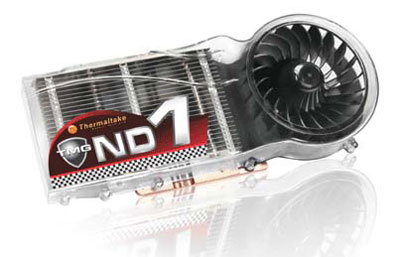I know standalone PCI blowers have been around a while, but with my recent fascination with mini ITX and cramped spaces they tend to end up with, a weird idea crossed my mind. I was thinking about systems built around things like the Streacom F7C, Silverstone ML05, SG05/06, Thermaltake Element Q, Antec ISK300 and so on.
Especially for people who will use the onboard graphics for things like HTPCs or work/light gaming oriented systems where the PCI slot will may be unused. Perhaps for people who want additional cooling for peace of mind or so they can go for a full voltage CPU.
So I drew it out...
Essentially a strange hybrid of current AIO CPU coolers and blower type GPU heatsinks. I am not familiar with anything like this. If there is one, please do let me know.





 LinkBack URL
LinkBack URL About LinkBacks
About LinkBacks


 Reply With Quote
Reply With Quote







